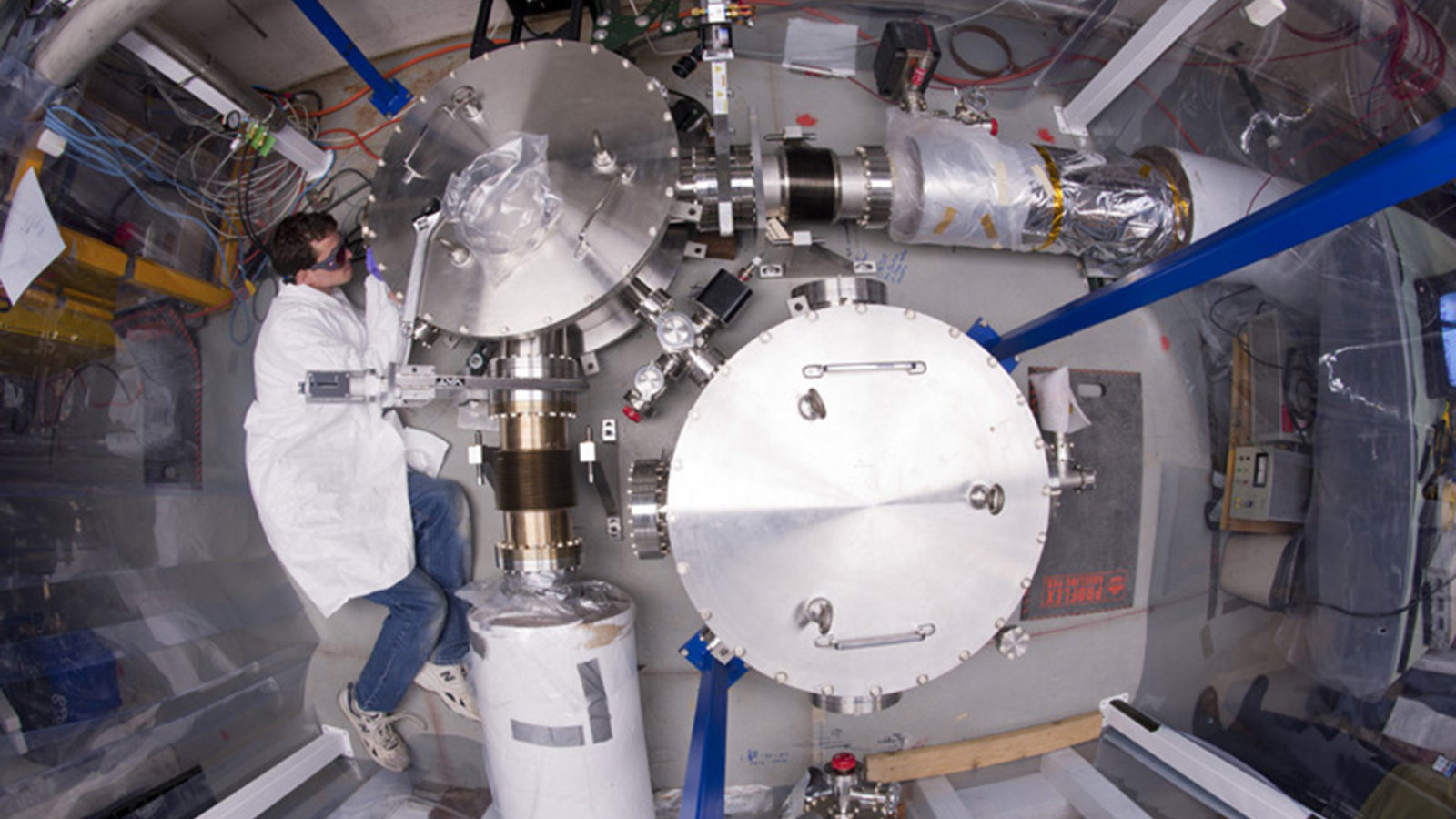A unique experiment at Fermi National Accelerator Laboratory has started collecting data that will answer some mind-bending questions about our universe—including whether we live in a hologram.
Much like characters on a television show would not know that their seemingly 3-D world exists only on a 2-D screen, we could be clueless that our 3-D space is just an illusion. The information about everything in our universe could actually be encoded in tiny packets in two dimensions.
Get close enough to your TV screen and you’ll see pixels, small points of data that make a seamless image if you stand back. Scientists think that the universe’s information may be contained in the same way and that the natural “pixel size” of space is roughly 10 trillion trillion times smaller than an atom, a distance that physicists refer to as the Planck scale.
“We want to find out whether space-time is a quantum system just like matter is,” says Craig Hogan, director of Fermilab’s Center for Particle Astrophysics and the developer of the holographic noise theory. “If we see something, it will completely change ideas about space we’ve used for thousands of years.”
Quantum theory suggests that it is impossible to know both the exact location and the exact speed of subatomic particles. If space comes in 2-D bits with limited information about the precise location of objects, then space itself would fall under the same theory of uncertainty. The same way that matter continues to jiggle (as quantum waves) even when cooled to absolute zero, this digitized space should have built-in vibrations even in its lowest energy state.
Essentially, the experiment probes the limits of the universe’s ability to store information. If there is a set number of bits that tell you where something is, it eventually becomes impossible to find more specific information about the location—even in principle. The instrument testing these limits is Fermilab’s Holometer, or holographic interferometer, the most sensitive device ever created to measure the quantum jitter of space itself.
Now operating at full power, the Holometer uses a pair of interferometers placed close to one another. Each one sends a 1-kilowatt laser beam (the equivalent of 200,000 laser pointers) at a beam splitter and down two perpendicular 40-meter arms. The light is then reflected back to the beam splitter where the two beams recombine, creating fluctuations in brightness if there is motion. Researchers analyze these fluctuations in the returning light to see if the beam splitter is moving in a certain way, being carried along on a jitter of space itself.
“Holographic noise” is expected to be present at all frequencies, but the scientists’ challenge is not to be fooled by other sources of vibrations. The Holometer is testing a frequency so high—millions of cycles per second—that motions of normal matter are not likely to cause problems. Rather, the dominant background noise is more often due to radio waves emitted by nearby electronics. The Holometer experiment is designed to identify and eliminate noise from such conventional sources.
“If we find a noise we can’t get rid of, we might be detecting something fundamental about nature—a noise that is intrinsic to space-time,” says Fermilab physicist Aaron Chou, lead scientist and project manager for the Holometer. “It’s an exciting moment for physics. A positive result will open a whole new avenue of questioning about how space works.”
The Holometer experiment, funded by the US Department of Energy Office of Science and other sources, is expected to gather data over the coming year.
Fermilab published a version of this article as a press release.



